The Original Lisbon Walk
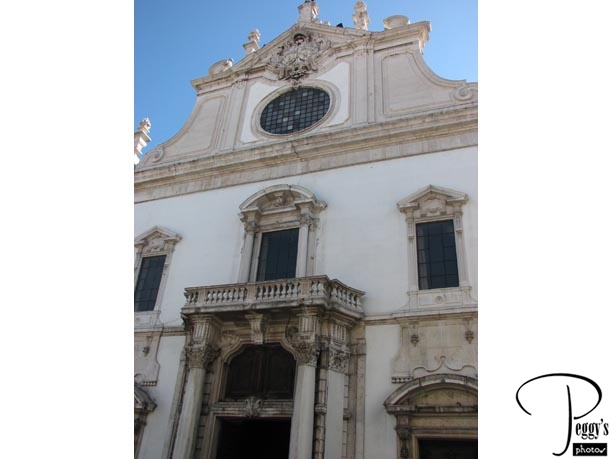
Today is Easter Sunday. On my way to meet another Inside Lisbon walking group, I stopped off to e–mail my family at the Western Union Office, which I was surprised to find open this morning. My hotel was charging 10 euros for 1/2 hour of computer time; Western Union only 3 euros for an hour. The tour today was The Original Lisbon Walk, meeting again at the statue on Praca Dom Pedro IV (Rossio) at 10 a.m. Joining the tour were a mother and daughter from England, couples from Germany, France, and Italy, the two Australian girls who work in London from yesterday’s tour, an Australian young man who works in Copenhagen, and an American from Northern California studying in the Czech Republic with his girlfriend from that country. He was only the second American that I had met so far in Lisbon. Our first stop was a visit to the Church of Sao Domingos off the Placa da Figuerira at Largo Sao Domingos. This church was rebuilt after the 1755 earthquake––one of the churches that collasped on worshippers during the earthquake.

The Original Lisbon Walk
The Original Lisbon Walk
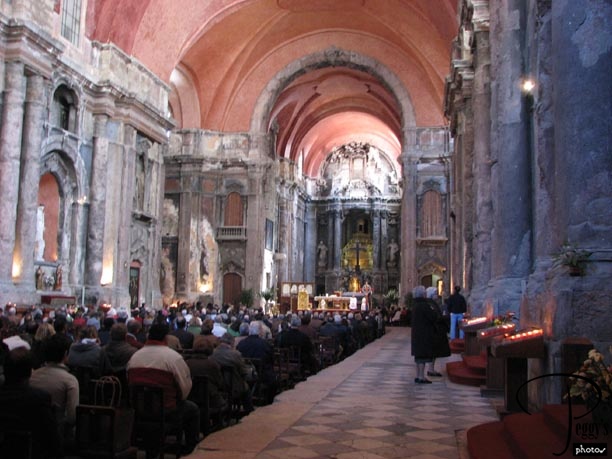
Inside the Church. Mass was going on.

The Original Lisbon Walk
The Original Lisbon Walk

Our next stop, near the church, was for some shots of ginjinha at the oldest ginjinha bar in Lisbon. Ginjinha is a sweet liquor made from the ginja berry, a sour cherry–like berry, sugar, and grappa. You can order either a small or a large ginjinha with or without berries. I had a small one with berries––80 cents. Very very good.

The Original Lisbon Walk
The Original Lisbon Walk
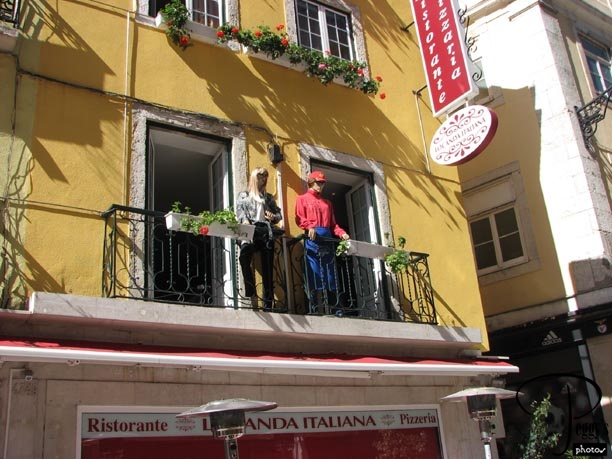
Mannequins we passed.

The Original Lisbon Walk
The Original Lisbon Walk
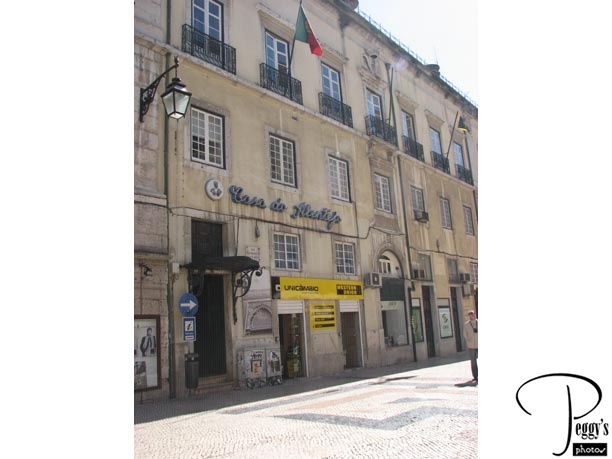
Somewhere between the Largo Sao Domingos and the Placa dos Restauradores, we visited the Casa do Alentejo Palace, located in this nondescript building.

The Original Lisbon Walk
The Original Lisbon Walk
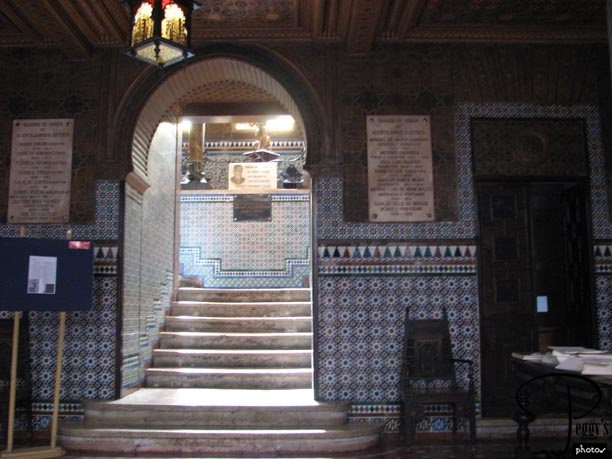
Inside, the Casa do Alentejo Palace is a beautiful collection of rooms and staircases of tiles, Moorish arches, and stained glass.

The Original Lisbon Walk
The Original Lisbon Walk
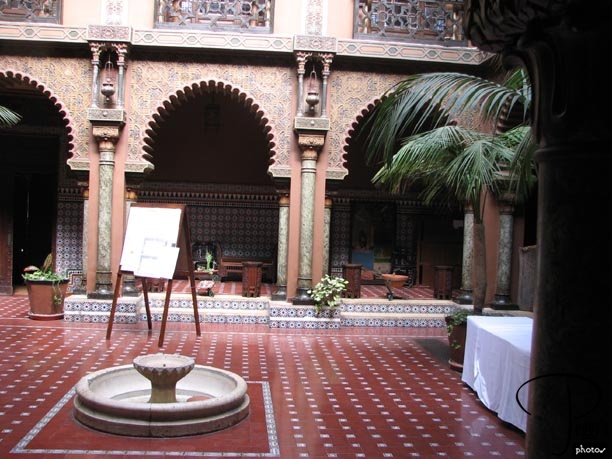
Its inner courtyard.

The Original Lisbon Walk
The Original Lisbon Walk

One of its stained–glass windows.

The Original Lisbon Walk
The Original Lisbon Walk
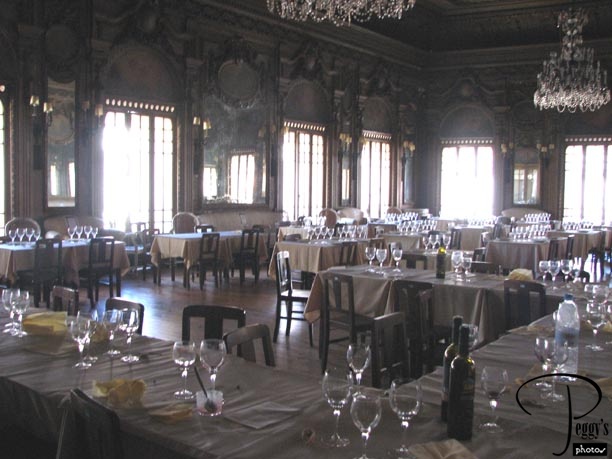
One of its dining rooms.

The Original Lisbon Walk
The Original Lisbon Walk
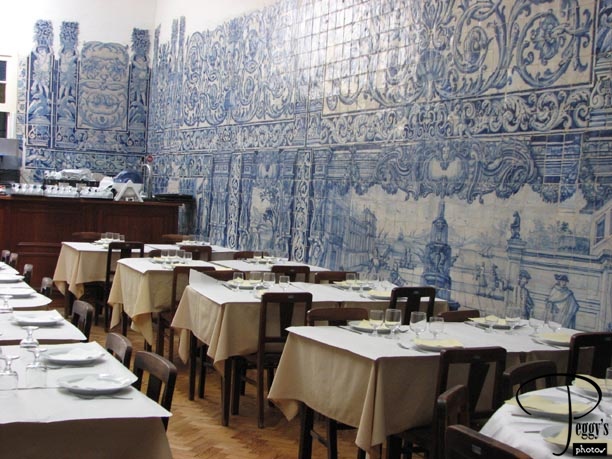
Another dining room.

The Original Lisbon Walk
The Original Lisbon Walk
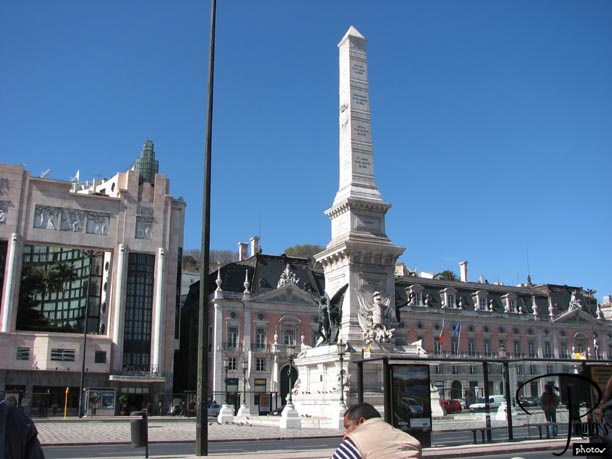
We walked to the Placa dos Restauradores.

The Original Lisbon Walk
The Original Lisbon Walk
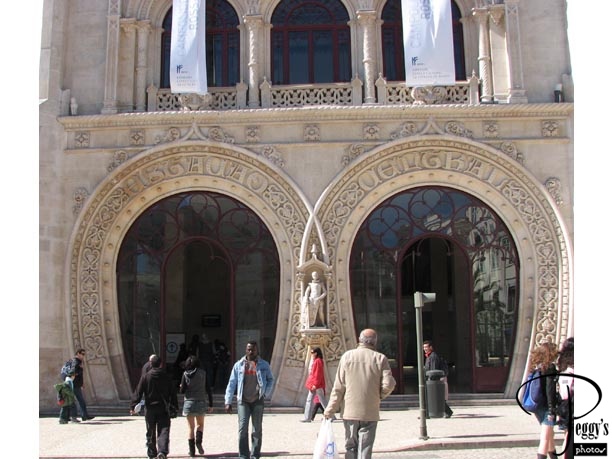
Pass the Rossio train station.

The Original Lisbon Walk
The Original Lisbon Walk
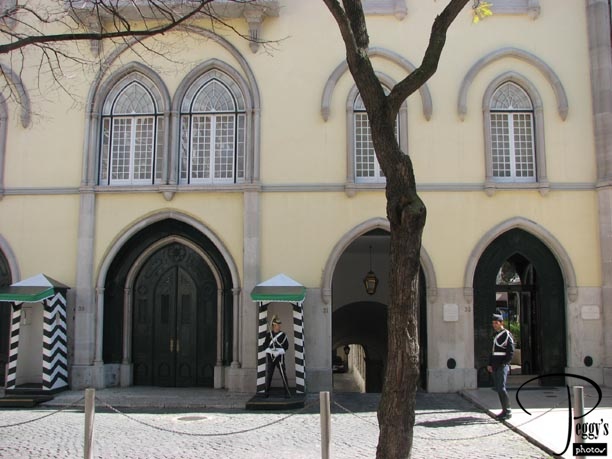
And after what must have been a steep uphill climb (which I don’t remember doing––maybe because of that shot of gginjinha), we arrived at Largo do Como in the Bairro Alto. Photo: the National Guard Headquarters.

The Original Lisbon Walk
The Original Lisbon Walk
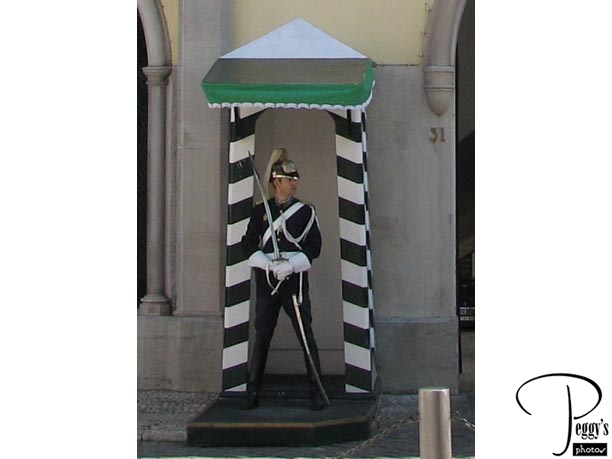
One of the guards guarding the headquarters.

The Original Lisbon Walk
The Original Lisbon Walk
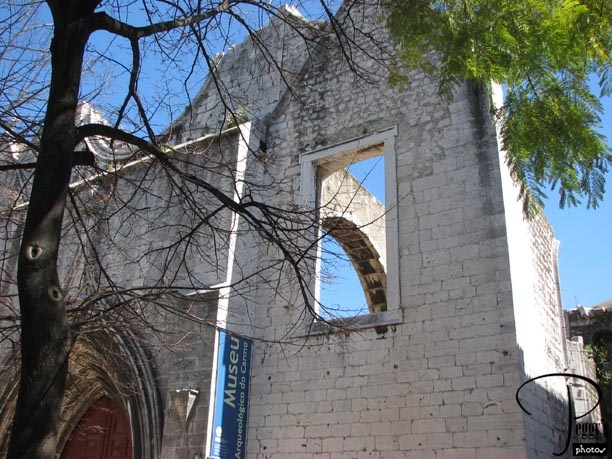
Right next to the National Guard Headquarters is the Igreja do Carmo––or what is left of it. The church was very seriously damaged during the 1755 earthquake, but the Marques de Pombal had it left in its destroyed state to serve as a reminder of the earthquake’s devastation. Inside its shell is an archeological museum.

The Original Lisbon Walk
The Original Lisbon Walk
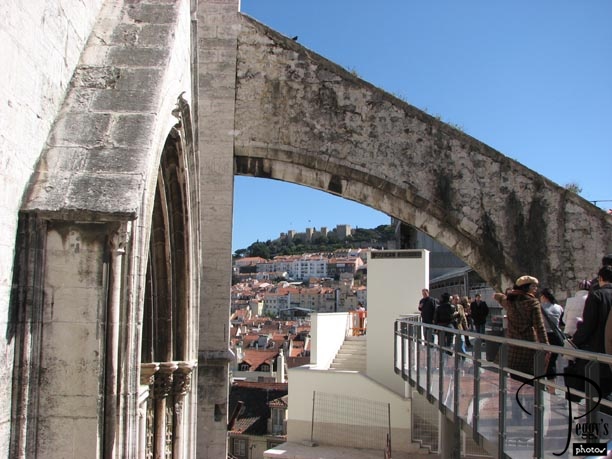
One of the remaining Gothic arches of the Igreja do Carmo. You walk under the arch to reach the top of the Elevador de Santa Justa.

The Original Lisbon Walk
The Original Lisbon Walk
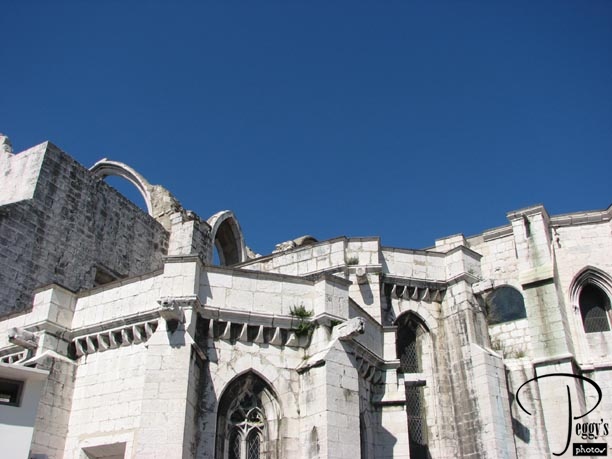
Looking back at the Igreja do Carmo.

The Original Lisbon Walk
The Original Lisbon Walk
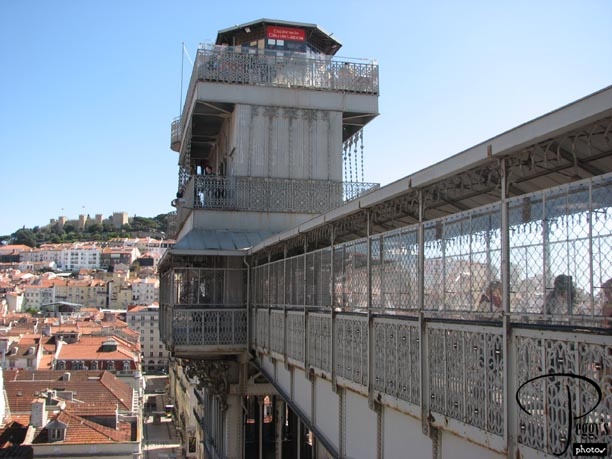
Looking forward to the Elevador de Santa Justa.

The Original Lisbon Walk
The Original Lisbon Walk
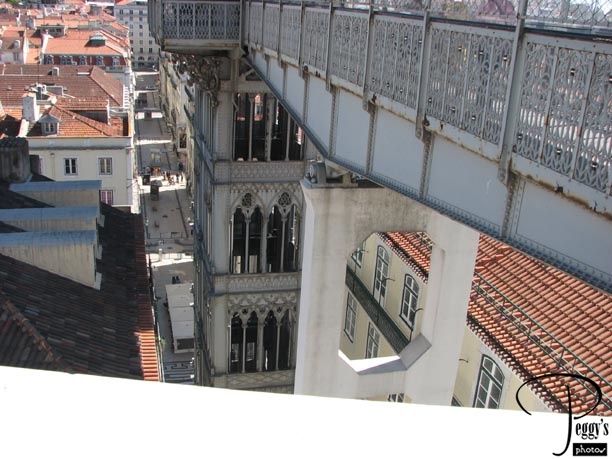
Looking down. Where you see a group of people is the Rua Augusta, the pedestrian street.

The Original Lisbon Walk
The Original Lisbon Walk
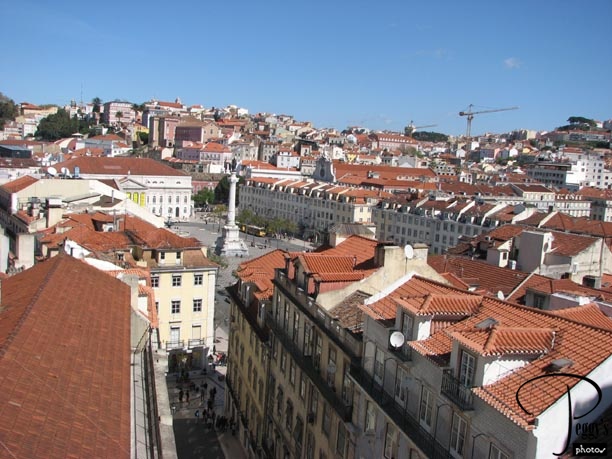
Looking across Lisbon you can see the Praco Dom Pedro IV (Rossio) where we started our walk. The Mundial, my hotel, is at the right back of the photo.

The Original Lisbon Walk
The Original Lisbon Walk
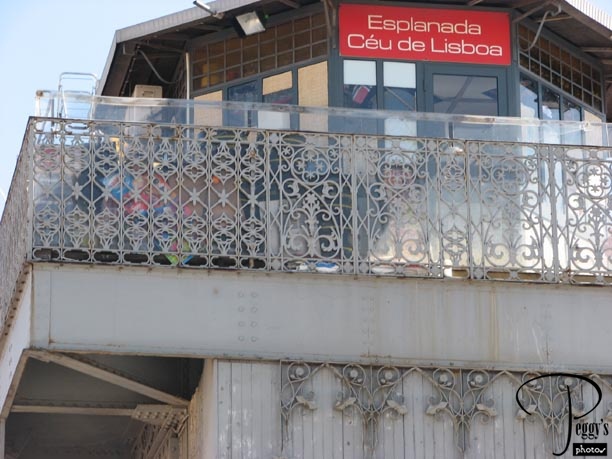
The cafe on the top of the Elevador. Some of our group went to have coffee there and others of us waited for them.

The Original Lisbon Walk
The Original Lisbon Walk
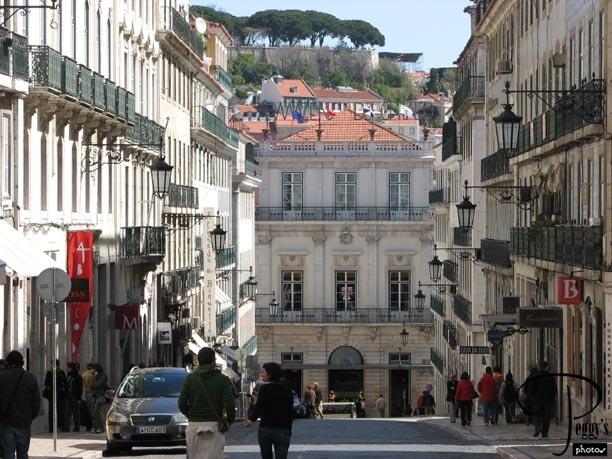
From the Bairro Alto, we walked to the Chiado district. Many buildings are new in this district as there was a devasting fire here in 1988. Photo: the Armazens do Chiado, a six–floor shopping center which connects Chiado with Baixa down below.

The Original Lisbon Walk
The Original Lisbon Walk
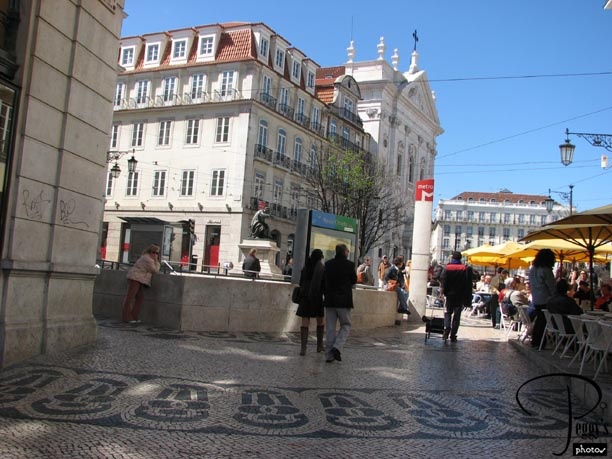
In the Chiado district––very pretty with many stores and cafes.

The Original Lisbon Walk
The Original Lisbon Walk
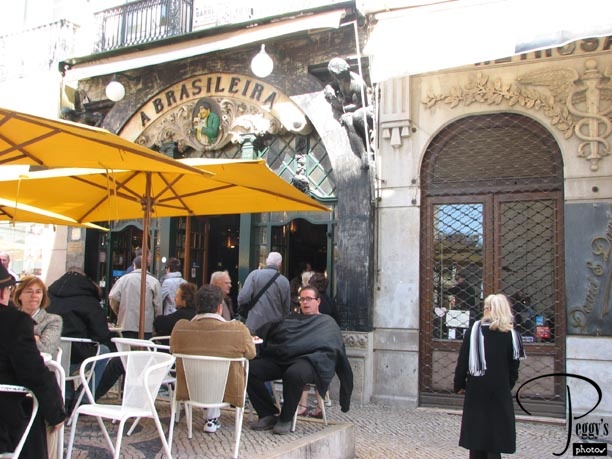
The 100–year–old Cafe A Brasileira.

The Original Lisbon Walk
The Original Lisbon Walk
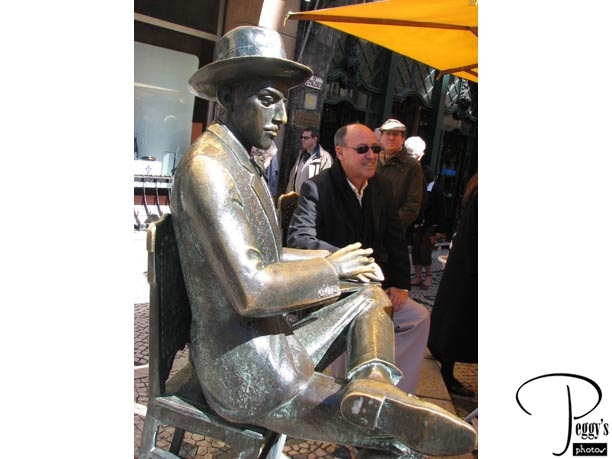
In the 1920s and 1930s, the cafe was the meeting place of the literary and creative. One constant patron was Fernando Pessoa (1888–1935), considered to be one of the two best Portuguese poets. He has been given a permanent seat in this cafe.

The Original Lisbon Walk
The Original Lisbon Walk
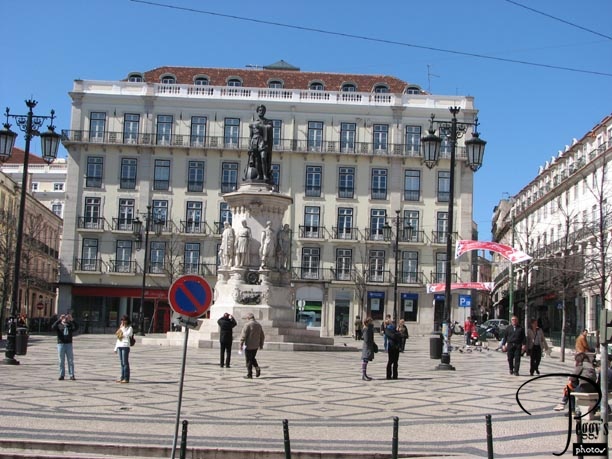
A square in the Chiado district.

The Original Lisbon Walk
The Original Lisbon Walk
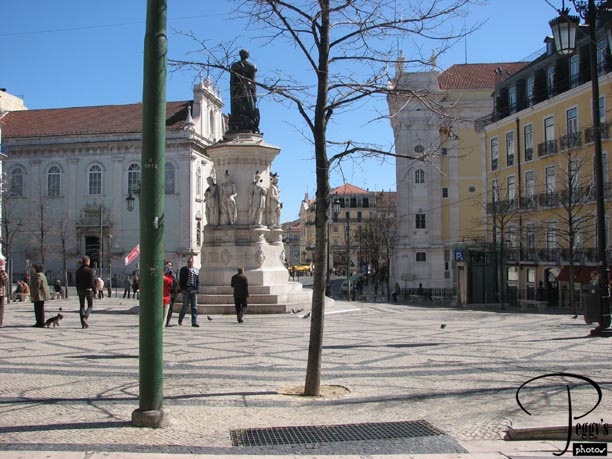
Looking in the another direction.

The Original Lisbon Walk
The Original Lisbon Walk

My tour group. We are waiting for Tram 18 to take us over to Alfama.

The Original Lisbon Walk
The Original Lisbon Walk
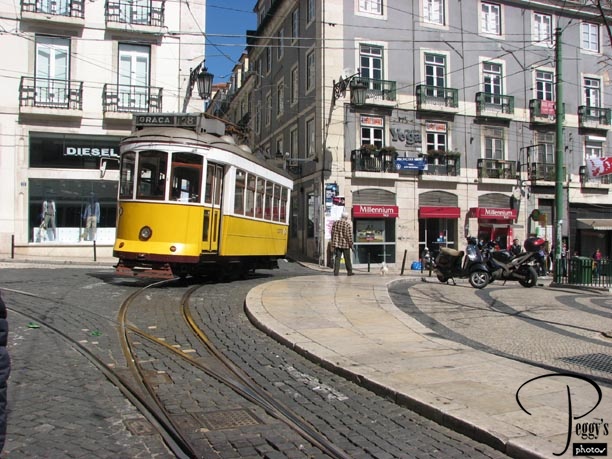
Our tram.

The Original Lisbon Walk
The Original Lisbon Walk
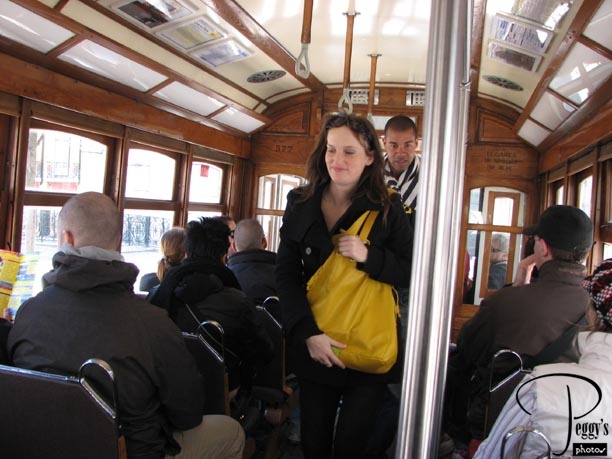
The tram was empty here, so we all had seats. But it filled up quickly at the next stops, and again, when you didn’t think anymore people could fit in, more people came on.

The Original Lisbon Walk
The Original Lisbon Walk
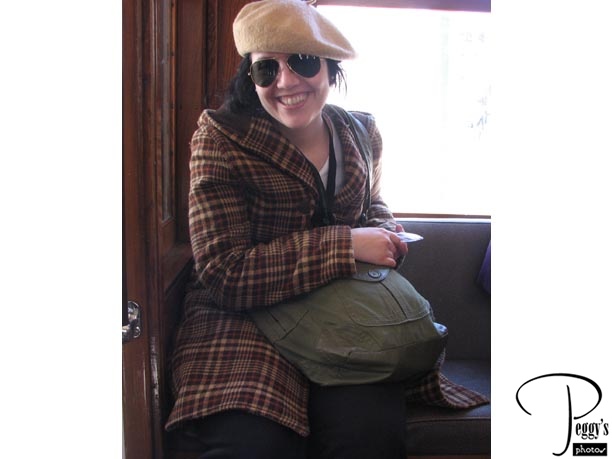
Our great tour guide, Maria.

The Original Lisbon Walk
The Original Lisbon Walk
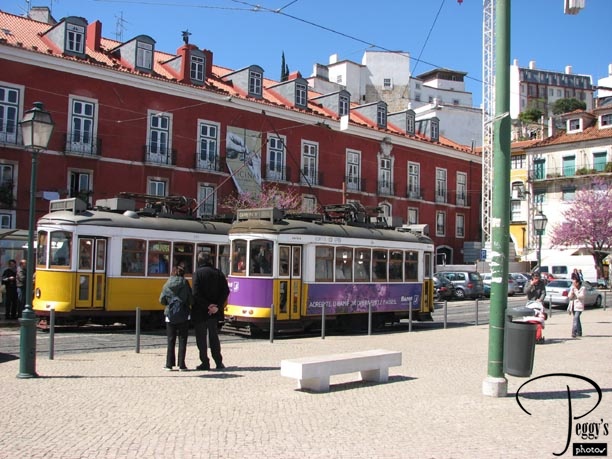
Getting off in Alfama.

The Original Lisbon Walk
The Original Lisbon Walk
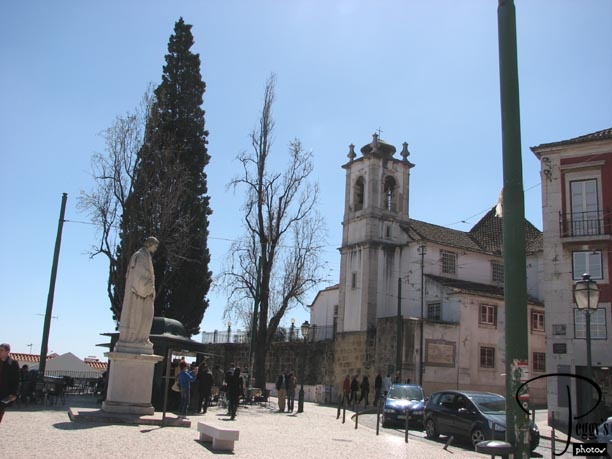
Church of St. Luzia.

The Original Lisbon Walk
The Original Lisbon Walk
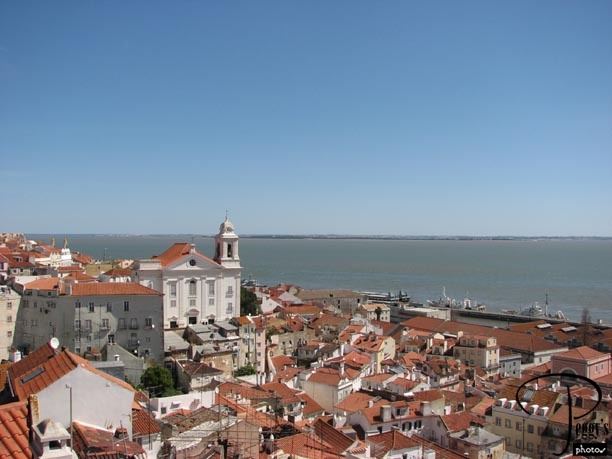
View from the St. Luzia viewpoint behind the church.

The Original Lisbon Walk
The Original Lisbon Walk
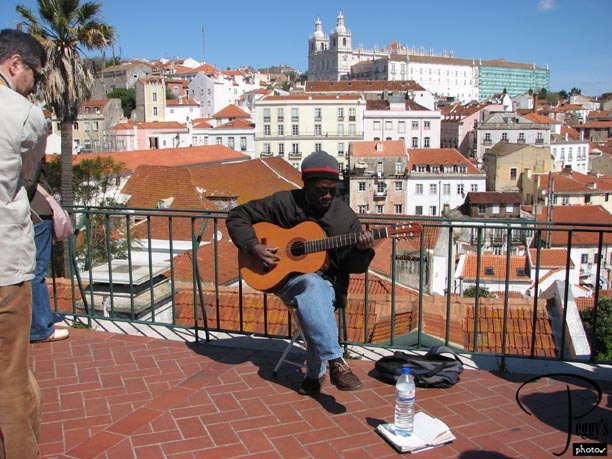
The church in the background is the Mosteiro de Sao Vicente, which we visited on yesterday’s walk. Here, this musician introduced us to African music. I took a movie clip of him singing, which is on this website: Go to Movies, Western Europe, Portugal, “African Music in Lisbon.”

The Original Lisbon Walk
The Original Lisbon Walk
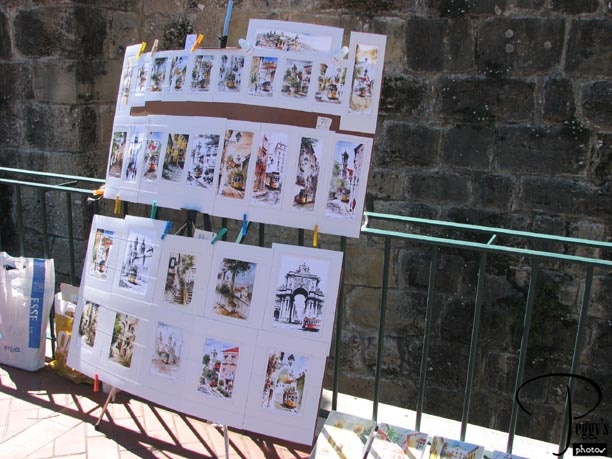
Artists were also at the viewpoint to sell their tourist paintings of Lisbon.

The Original Lisbon Walk
The Original Lisbon Walk
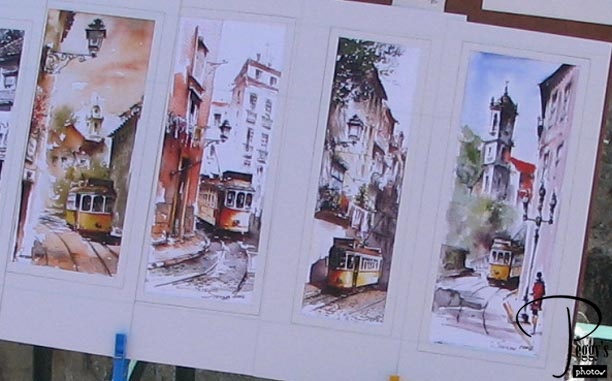
Close–up of some of the paintings.

The Original Lisbon Walk
The Original Lisbon Walk
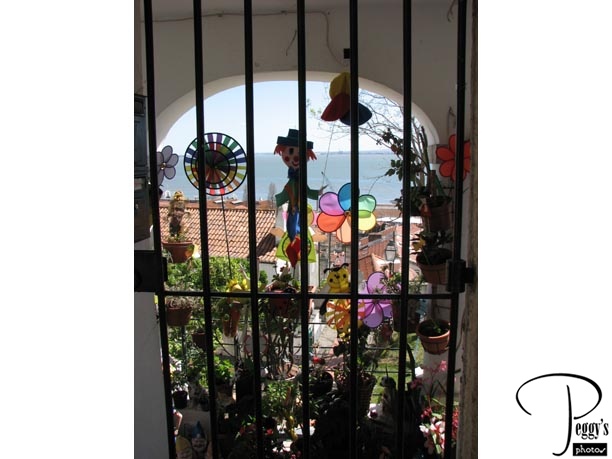
A colorful window seen on our walk.

The Original Lisbon Walk
The Original Lisbon Walk
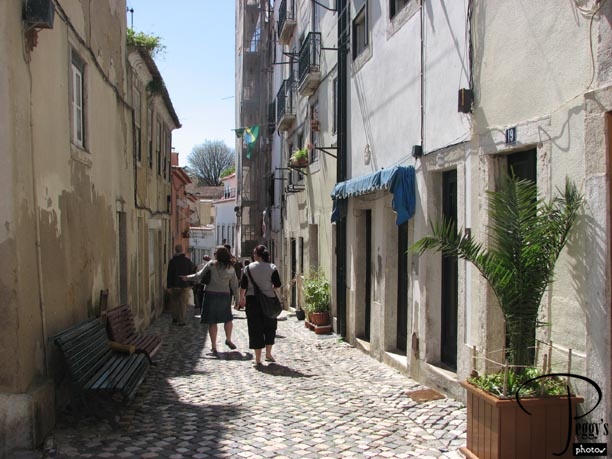
Walking in Alfama. Alfama didn’t receive much destruction from the 1755 earthquake as it is built right into the rocks. It is one place you can see the old Lisbon. The quarter dates back to the 6th to 8th century to when the Visigoths were here. Next came the Moors, then it became a fishermen and mariners district.

The Original Lisbon Walk
The Original Lisbon Walk
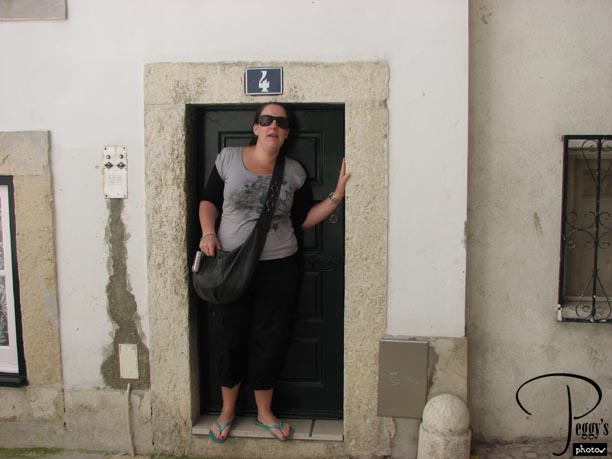
This girl from Australian kept having her photo taken by her friend when standing in doorways. Finally, I asked her why––she was measuring the height of the doorways. She is 5 feet 4 inches.

The Original Lisbon Walk
The Original Lisbon Walk
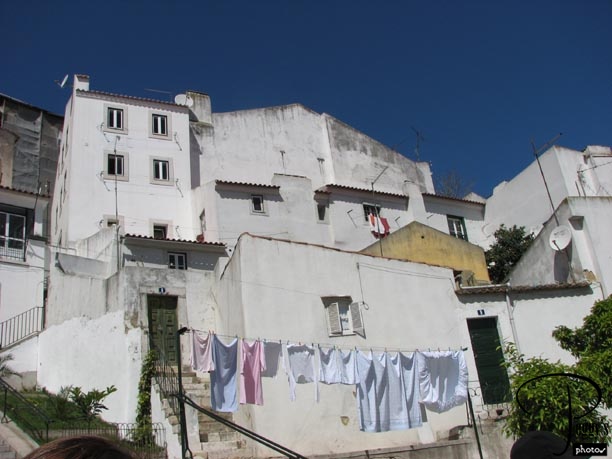
More of Alfama.

The Original Lisbon Walk
The Original Lisbon Walk
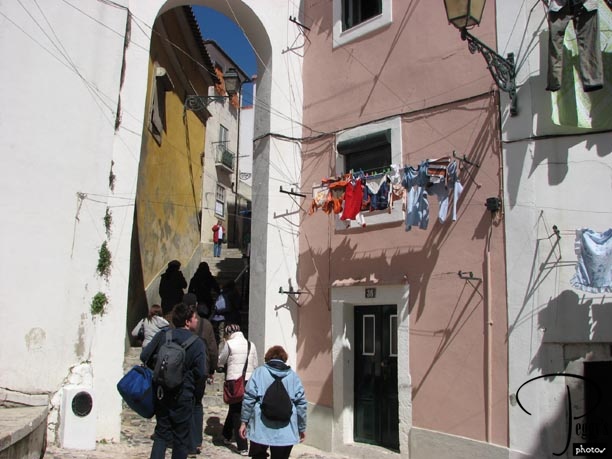
Apart from the laundry, you can see that these houses have been fixed up. Sprucing–up the Alfama district is a current project. In a number of years, it will look very different from it does today and, perhaps, not all for the better as it will lose much of its Old Lisbon charm.

The Original Lisbon Walk
The Original Lisbon Walk
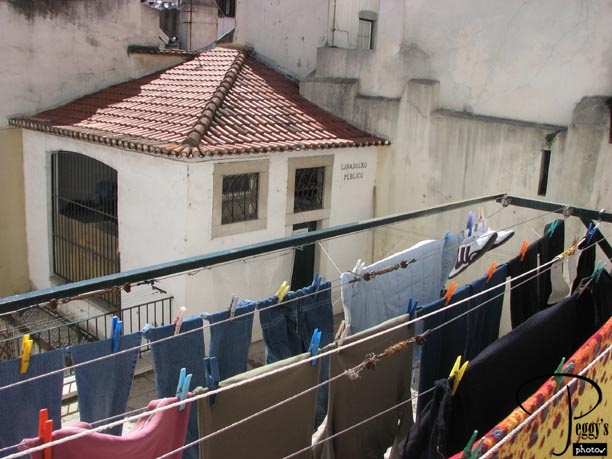
A public bathhouse.

The Original Lisbon Walk
The Original Lisbon Walk
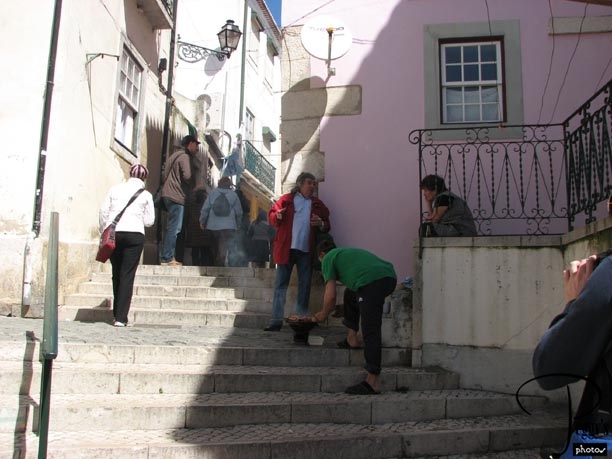
This man was barbecuing what looked like a very delicious Easter lunch––chicken and beef kebobs. Maria told us of the festival held in Alfama every June––one of singing, dancing, grilled sardines, drinks, lanterns, and decorations.

The Original Lisbon Walk
The Original Lisbon Walk

Cafe in the Alfama.

The Original Lisbon Walk
The Original Lisbon Walk
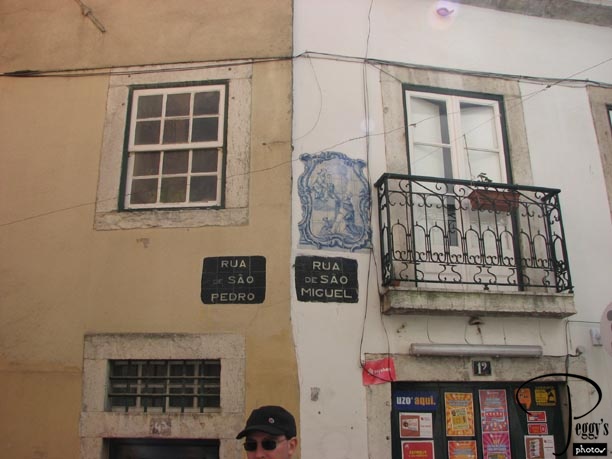
Back on Rua de Sao Miguel. We were here yesterday.

The Original Lisbon Walk
The Original Lisbon Walk
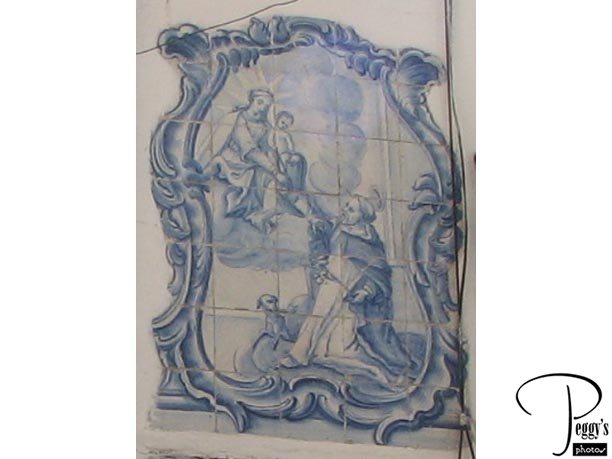
Close–up of the tile on the wall.

The Original Lisbon Walk
The Original Lisbon Walk
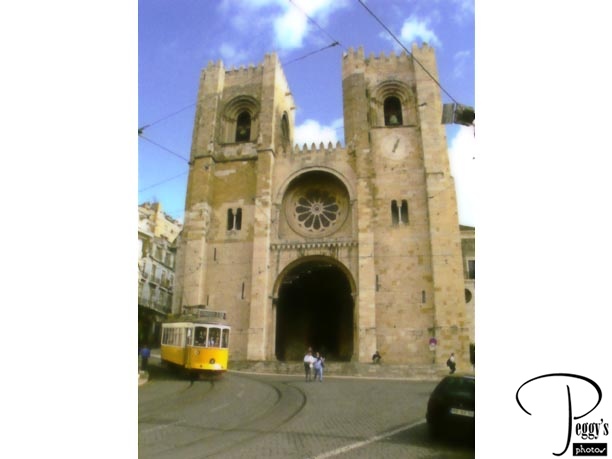
The Se Cathedral. This is from a postcard as we had entered the church from the side and when we exited it I forgot to turn around and take a photo of it. It was rebuilt after the 1755 earthquake, mainly in the Romanesque style.

The Original Lisbon Walk
The Original Lisbon Walk
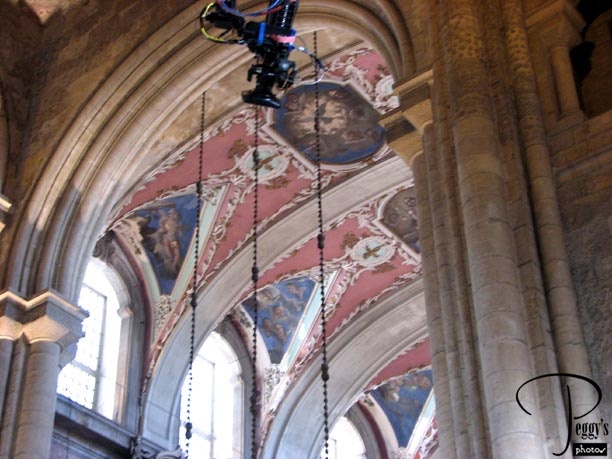
Inside the Se.

The Original Lisbon Walk
The Original Lisbon Walk
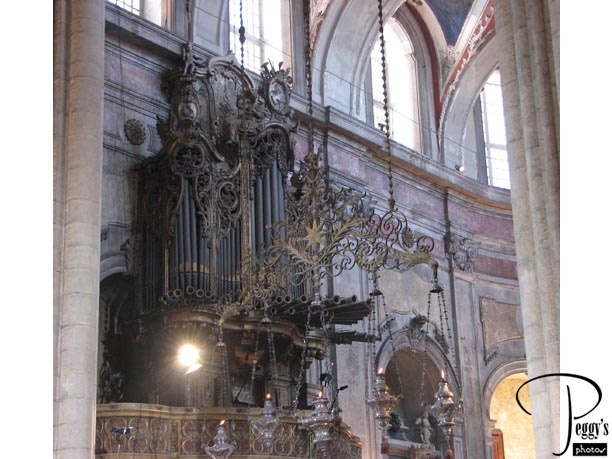
Also inside the Se. A mass was going on so only a couple of photos could be taken.

The Original Lisbon Walk
Hop-on Hop-off Bus
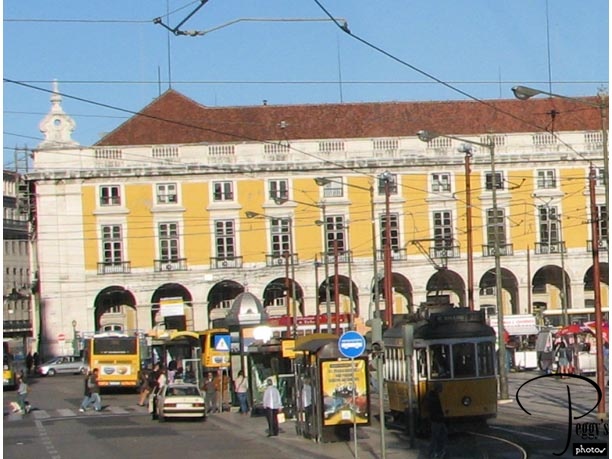
We ended our walking tour at the Praca do Comercio. I greatly enjoyed the tour and also having Maria for my guide. My original plan for the afternoon was to take a ferry over to see the Christo Rei statue––something “religious” to do on Easter Sunday. But first I walked to the Rua Augusta looking for a cafe––no cafes were open here. I even thought of eating at the restaurant where I ate yesterday that charged me 3 euros for two little pats of butter––it was also closed. I went back to the Praca do Comercio and walked to where I thought the boat to the Christo Rei statue was. I went to the wrong ferry landing and was told I had to walk about 10 minutes to the right landing. I decided then that I could not do anymore walking––I could feel the toll of walking down a mountain and up and down the cobblestoned streets in Sintra and Lisbon during the last 2 1/2 days and all I could think of was sitting down. Where better to sit then on a hop–on hop–off bus, which I did. I took both the Carris Tagus Tour and Olisipo Tour and I have put them on a slideshow on this website: Go to Slide Shows, Western Europe, Portugal, “Lisbon: Bus Tours of Lisbon.” I had my emergency candy bar and a roll of mints for lunch, as even though I saw some places on the bus route that were open, I didn’t want to lose my front top seat on either bus. The tours left from the Praca do Comercio.

Hop-on Hop-off Bus
Rua Augusta
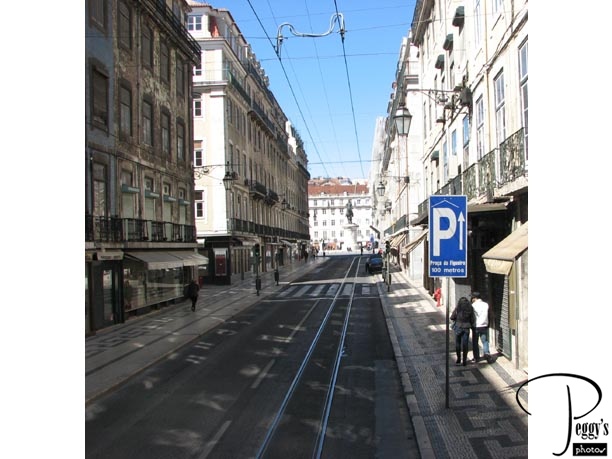
After taking the two Carris tours, I walked back to my hotel through an rather empty Rua Augusta with all its stores and cafes closed for the Easter holiday.

Rua Augusta
Rooftop Dining
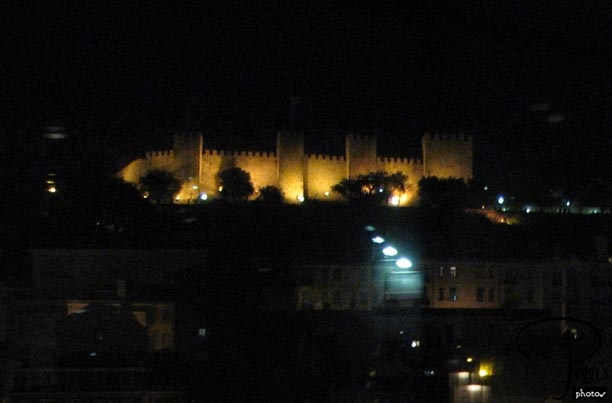
Although I didn’t eat lunch today, I made sure that I was going to have a very nice Easter dinner and had made reservations at my hotel’s elegant rooftop dining restaurant––actually, I wanted to take some night photos from it. My hotel had offered a gourmet fixed–priced Easter lunch for 32 euros: samples of it––entrada (starter): cress salad with quail eggs and fume salmon; prato prinicipal (main course): fried deer with poetry pate and fresh cream or fried monkfish with clams and coriander sauce or baecked baby goat with saffron rice; and a desert buffet and water, wine, and coffee. A similar menu, but not price–fixed, was offered at the rooftop restaurant. Four appetizers appeared on my table––I chose one. In Portugal, you are only charged for the appetizers that you eat––you are supposed to ask the waiter to remove the ones that you don’t want. I had lampreia de ovos, which was something with bacon and delicious. I also had a salad and spaghetti Bolganese (I am not a good gourmet–food eater), salad, coffee, water, and desert––a desert bar where you could choose as many deserts as you wanted and all very good. Total price: 32,70 euros. Photo: Castelo de Sao Jorge lit up at night.

Rooftop Dining
Rooftop Dining

Praca da Figueira lit up at night. This turned out to be a very enjoyable Easter Sunday.
